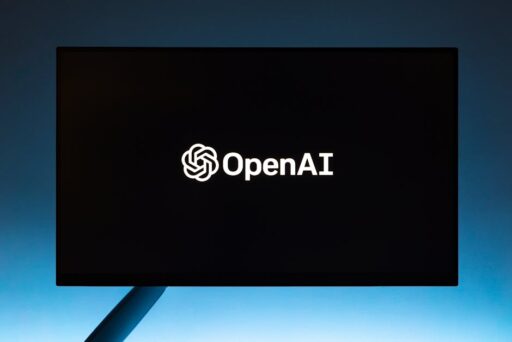AI Memory Systems: The Next Frontier for LLMs and Apps
Modern large language models (LLMs) are powerful pattern matchers, but one limitation is becoming impossible to ignore: they typically lack persistent, portable memory the way humans remember past interactions. A new generation of AI memory systems aims to change that — enabling models and applications to store, retrieve, and evolve user memory across sessions, apps, and providers. This post explains why AI memory systems matter, how they work, and what developers and enterprises should consider when adopting them.
Why persistent memory matters for AI
Human conversations and workflows rely on context continuity. If two people lose connection mid-conversation, they usually resume where they left off. Current LLM interactions often restart from scratch once a session ends or a model context window resets. That gap undermines user experience and limits AI utility in tasks that depend on history, personalization, or long-term reasoning.
AI memory systems introduce lasting context: user preferences, past decisions, long-term project notes, session histories, and any other structured or unstructured signals that make interactions coherent over time. The result: assistants that remember goals, therapy bots that recall previous sessions, copilots that learn your habits, and automation agents that preserve intent across complex flows.
What is an AI memory system?
An AI memory system is a framework — typically offering an API and SDKs — that allows developers to:
- Store and index memory items (text, embeddings, metadata).
- Retrieve contextually relevant memories during inference.
- Update or evolve stored memories as new information arrives.
- Share or federate memory securely across apps or agents when appropriate.
Crucially, modern memory systems aim to be model-agnostic and interoperable with common developer frameworks and LLM providers, so memory can travel with users across different models and app boundaries.
How do AI memory systems work?
At a high level, an AI memory stack includes:
1. Ingestion and indexing
Raw inputs (chat snippets, documents, user preferences) are converted into representations — often embeddings — and indexed for fast retrieval.
2. Retrieval and relevance
During an LLM request, the memory system finds contextually relevant items to provide to the model. Retrieval strategies balance recency, relevance, and privacy constraints.
3. Evolving memory
Memories can be merged, summarized, or aged out based on rules or automated pipelines. This avoids indefinite context bloat and keeps the memory aligned with the user’s current state.
4. Integration with models and frameworks
Memory systems expose APIs or plugins that integrate with frameworks like LangChain or LlamaIndex, and with model providers so developers can inject memory as part of prompts or retrieval-augmented generation (RAG) workflows.
Which applications benefit most?
Persistent memory unlocks higher-value experiences across many categories:
- Personal assistants and copilots that retain user goals and project state.
- Therapeutic and coaching bots that recall prior conversations for continuity.
- Finance and productivity apps that remember past decisions, preferences, and context.
- Customer support agents that recognize returning users and prior issue history.
Isn’t persistent memory already being built by big AI labs?
Yes—major AI labs have begun experimenting with long-term memory features. However, many large providers embed memory inside their own stacks, which can limit portability. An open, neutral memory layer aims to be interoperable so developers can build applications that persist user context across different models and platforms, instead of locking memory into a single vendor’s ecosystem. Think of it as a standard layer that allows day-one personalization regardless of which model powers the interaction.
What challenges do memory systems face?
Building reliable, secure, and interoperable memory services is nontrivial. Key challenges include:
- Privacy and consent: Storing personal data requires explicit consent, secure storage, and clear deletion/portability mechanisms.
- Relevance and hallucination risk: Retrieval must avoid surfacing incorrect or stale memories that could mislead models.
- Scalability and latency: Memory lookups must be fast and cost-efficient for production workloads.
- Interoperability: Standard schemas and APIs are needed so memory can travel between apps and models.
- Governance and safety: Policies for redaction, access control, and auditing are essential for enterprise adoption.
What features should developers evaluate?
When choosing a memory system, look for:
- Model-agnostic APIs compatible with major LLM providers and open-source models.
- Easy integration with popular developer frameworks.
- Built-in tools for privacy, access controls, and export/deletion workflows.
- Reliable retrieval ranking, summarization, and memory evolution features.
- Transparent performance metrics and cost models.
How do memory systems change product strategy?
Persistent memory shifts how product teams approach personalization, onboarding, and retention. With memory, products can:
- Reduce friction by remembering user setups and preferences.
- Deliver progressive personalization from day one rather than after long usage periods.
- Create new revenue opportunities around premium personalization and memory portability.
How can companies adopt memory safely and effectively?
Practical recommendations:
- Start with a narrow scope: pilot memory for a specific feature (e.g., meeting summaries or project preferences).
- Define clear consent flows and easy data export/delete options.
- Implement memory aging and summarization to prevent unbounded growth.
- Use human-in-the-loop checks for sensitive memory updates.
- Measure value via retention, time-saved, and task completion uplift.
How does memory interact with data quality and model design?
High-quality memory depends on solid data infrastructure. Embeddings, canonicalization, and sanitation pipelines ensure memories are useful and reliable. For more on data’s role in model performance and reliability, see our deep dive on The Role of High-Quality Data in Advancing AI Models.
Which ecosystem players matter?
A healthy memory ecosystem involves:
- Open-source projects and standards that help portability and developer adoption.
- Cloud providers offering scalable memory APIs and compliance tooling.
- Frameworks that make it easy to plug memory into LLM pipelines.
For technical perspectives on contextual memory solutions, our coverage of Supermemory: Revolutionizing AI Contextual Memory Solutions is a useful reference.
What business models are emerging?
Businesses are experimenting with memory in several ways:
- Memory-as-a-service: subscription APIs billed by storage, retrieval, or operations.
- Value-added personalization: premium tiers with deeper retention and richer memory features.
- Enterprise licensing: on-prem or private cloud deployments for regulated industries.
What does the next 12–24 months look like?
Expect rapid innovation and competition. As models become more commoditized, memory will increasingly be a differentiator. Interoperability and open standards will determine whether memory becomes a vendor-locked moat or a portable utility that accelerates a broader AI ecosystem. For a broader view on how AI is evolving beyond scale and why foundational changes matter, see The Future of AI: Beyond Scaling Large Language Models.
What should developers build next?
Developers should focus on high-impact, privacy-conscious memory experiences that demonstrate measurable user value. Early projects that tend to win include customer support continuity, personal productivity copilots, and vertical assistants (finance, health coaching) where long-term context materially improves outcomes.
Conclusion — Why AI memory systems are mission-critical
Persistent memory transforms stateless LLM interactions into coherent, evolving relationships between users and AI. The technical and governance challenges are real, but the potential product and business upside is substantial. Organizations that adopt reliable, privacy-first memory systems can deliver personalization and continuity that consumers will soon expect as baseline behavior.
Ready to build with memory?
If you’re a developer or product leader, start by piloting memory in one customer journey, instrument outcomes, and iterate. Choose solutions that prioritize portability, privacy, and developer ergonomics so your memory investments remain future-proof as the LLM landscape evolves.
Call to action: Explore memory architectures, run a focused pilot, and share your results with the community — sign up for our newsletter to receive practical guides, interviews, and technical breakdowns on building persistent AI experiences.






